Its only drawback was that early night fighter versions were barely faster than the bombers they were trying to intercept.
In the mid-1930s, there was a great deal of interest in the concept of the heavy fighter, namely a fighter aircraft with at least two engines which would give improved survivability in combat as well as possess the ability to carry heavier weapons and have a longer range.
Interest in this new concept was particularly strong in Nazi Germany where the head of the Luftwaffe, Herman Göring, took a personal interest.
A design requirement was issued by the German Air Ministry in 1934, and the entry selected for production was that presented by the Bayerische Flugzeugwerke (Bavarian Aircraft Works).
The Chief Designer, Willy Messerschmitt, produced a design for a sleek, low wing, all metal, semi-monocoque monoplane powered by two Daimler-Benz DB 600A engines which could accommodate a crew of two people.
The Zerstörer (Destroyer) entered service with the Luftwaffe in 1937. Thanks in part to propaganda encouraged by Göring, these aircraft became regarded as the elite of the German Air Force. Schoolboys in Nazi Germany fantasized about becoming not single-engine fighter pilots but members of a Zerstörer crew.
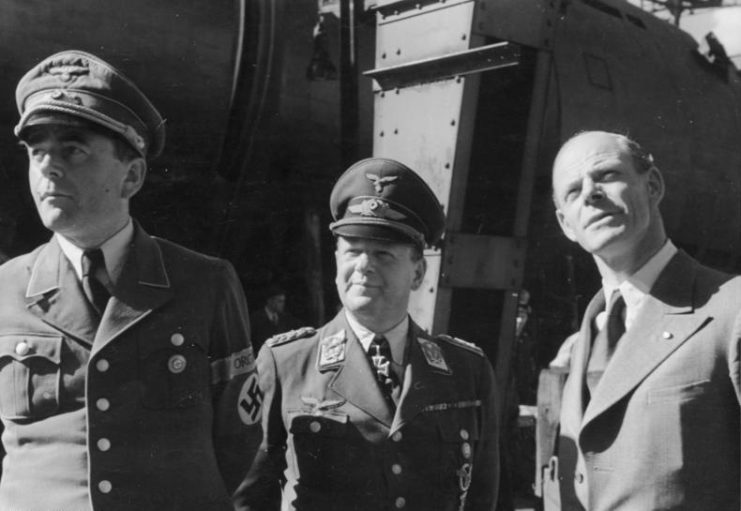
On paper, the Bf 110 certainly looked formidable. It had a range of 1,500 miles (compared to just 400 miles for the Bf 109), it was almost as fast as most single engine fighters, and it was armed with up to four 20mm MG FF cannon plus four MG 17, 7.92mm machine guns in its nose, giving it more firepower than any other contemporary fighter.
![Bf 110 of Nachtjagdgeschwader 4 (1943). Photo: Bundesarchiv, Bild 101I-377-2801-013 / Jakobsen [Jacobsen] / CC-BY-SA 3.0](https://www.warhistoryonline.com/wp-content/uploads/sites/64/2019/03/2-741x516.jpg)
Its weight (almost four tons) meant that it lacked maneuverability and acceleration compared to British Spitfire and Hurricane fighters. It was badly mauled during the battle.
The Luftwaffe began the battle with 237 Bf 110s and it lost more than 200 in combat over England in the late summer of 1940. One of the Bf 110 pilots killed during the battle was Herman Göring’s nephew, Hans-Joachim Göring.
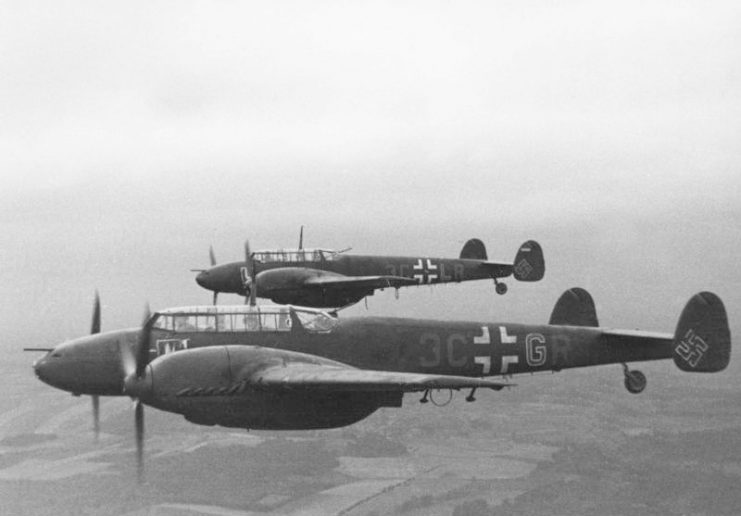
After that, the Bf 110 was generally relegated to a ground-attack role, though it did enjoy some success as a fighter during the early stages of the German invasion of Russia in 1941.
However, in 1940, the RAF switched from daylight bombing raids against Nazi targets to night bombing. Suddenly, Germany needed a night fighter. The Dornier Do-17Z and Junkers Ju-88-C2 were both considered but the aircraft chosen for the first Nachtjaeger (Night Fighter) Squadron was the Bf 110.
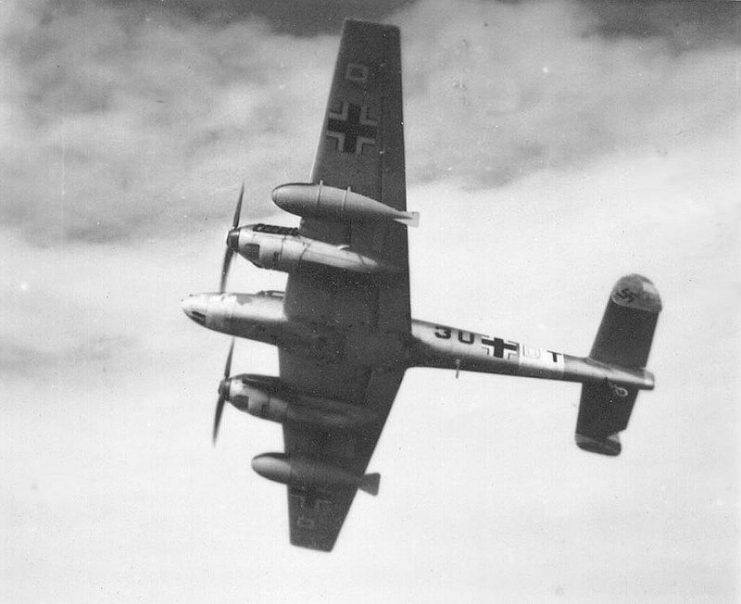
While a lack of maneuverability might have limited its use as a day fighter, the Bf 110 made an ideal night fighter. The power of its twin engines allowed it to lift greater loads than a single engine fighter. Furthermore, its heavy armament was capable of shooting down any bomber, and it was vice-free to fly, an important consideration for safe night operations.
Its only drawback was that early night fighter versions were barely faster than the bombers they were trying to intercept.
![Ground staff refueling a Messerschmitt Bf 110. Photo: Bundesarchiv, Bild 101I-404-0521-19A / Koster / CC-BY-SA 3.0]](https://www.warhistoryonline.com/wp-content/uploads/sites/64/2016/07/20.Bundesarchiv_Bild_101I-404-0521-19A_Flugzeug_Messerschmitt_Me_110_Betanken-640x437.jpg)
Initially, the Bf 110 C-1 day-fighter was used in the night fighter role by NJG1, but the means of detecting enemy aircraft carried by this version was the Mk1 human eyeball which only worked at dusk or dawn or on moonlit nights.
Then, Nachtjaeger units were equipped with Bf 110 D models fitted with a forward-facing, Spanner-Anlage infrared sensor. This allowed bombers to be targeted in full darkness, but it had a very short range and proved ineffective as an operational interception device.
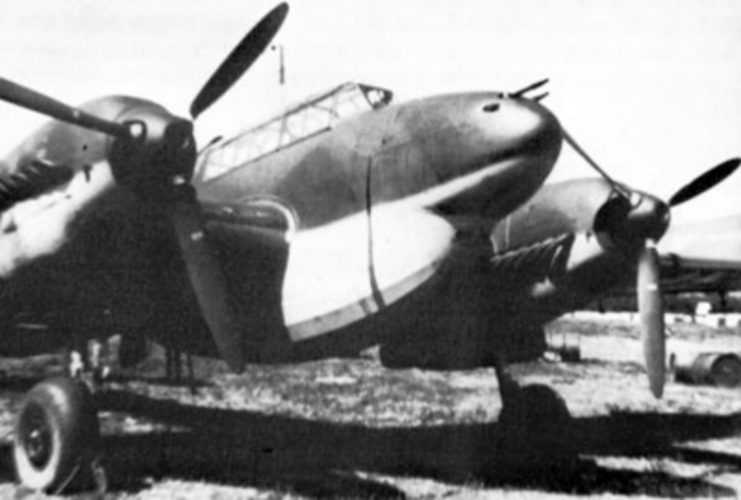
It wasn’t until the introduction of the Bf 110 F-4 in the summer of 1942 that the Luftwaffe finally found an effective night fighter. This version was fitted with FuG 202 Liechtenstein air interception radar which had an effective maximum range of 3-4 kilometers (1.8-2.4 miles), and it carried a third crewman to act as a radar operator.
Aircraft were vectored towards a target by ground controllers using Wurzburg and Freya radar. These radars were able to give the target’s altitude and speed and were accurate enough to guide the fighter to within 500m of a bomber, by which time the Bf 110s Liechtenstein radar would be able to lock on.
https://youtu.be/_oMXuGeFDog
The Bf 110 F-4 was also provided with a ventral tray mounting two MK 108 short-barreled 30-millimeter cannon which were easily capable of destroying any British bomber. Between April and June 1942, the Nachtjagd force destroyed 230 British bombers and by September it had shot down a total of 1,000 bombers.
Most of these victories were scored by Bf 110s – Ju-88s were also being used in the night fighter role, but these were often used in long-range intruder operations over England and most of the defense of the Reich fell to the Messerschmitt.
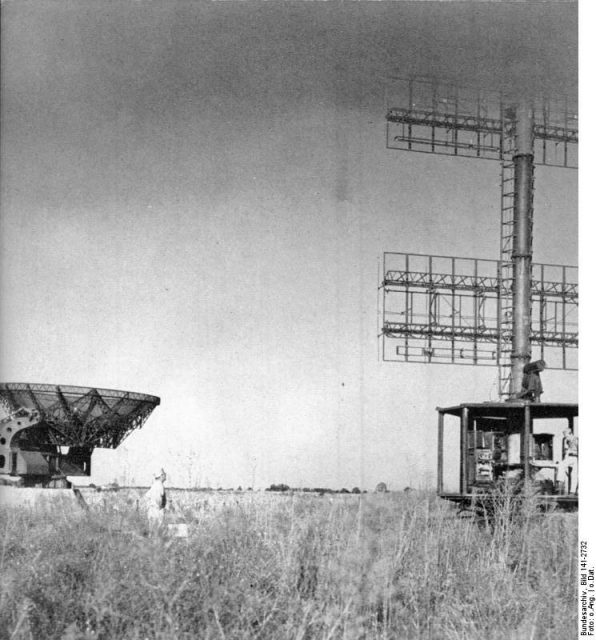
However, Bf 110s were still being spotted by the tail gunners of British bombers before they could attack. In response, the Bf 110 F-4/U-1 variant was fitted with a completely new weapon system.
Two MG FF 20-millimeter cannon were mounted in the rear part of the cockpit pointing upward and forward at an angle of around 80°. A sight was inset in the top of the canopy, and the ammunition was modified so that all rounds left a faint, glowing trail.
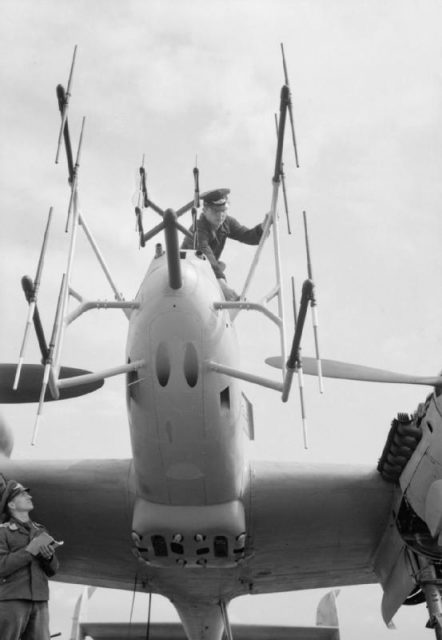
The fighter would maneuver below a bomber, often being able to see the aircraft silhouetted against the night sky above. The bomber, however, had no visibility below and would be unable to see the Bf 110 as it slid into position.
The fighter would generally target engines or fuel tanks if possible since firing directly into the bomb bay produced such a huge explosion that there was a risk of the attacker being damaged.
This system became known as Schraege Musik (strange music or slanted music). It proved so devastatingly effective against British bombers in the winter of 1943/44 that some British raids produced unsupportable levels of casualties.

The final main variant of the Bf 110, the ‘G’ model began to arrive in 1943 (there were a few ‘H’ models, but these simply featured different engines) and this included the Bf 110 G-4, a dedicated night fighter version which featured uprated DB 605B engines and provision for an improved Lichtenstein radar unit.
Many G-4 models were also fitted with the Schraege Musik system. Some also featured yet another way of locating RAF bombers.
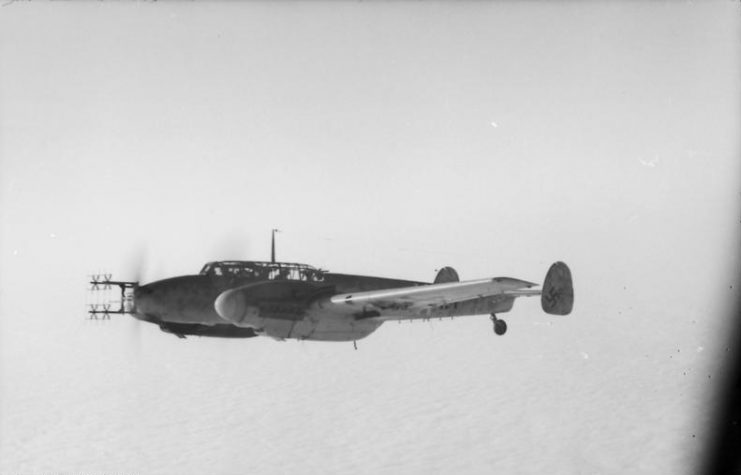
By 1943, many British bombers were fitted with a system code-named ‘Monica,’ a detector designed to warn the bomber that an aircraft behind was searching for them using radar. The system worked, but the Luftwaffe responded with the Rosendaal-Halbe system, a passive receiver which homed-in on the emissions from Monica.
A number of Bf 110 G-4s were fitted with this system in early 1945, and this enabled them to find their prey easily in the night sky. With improved performance and armament, as well as devices which allowed them to find RAF bombers in total darkness, the last version of the Bf 110 became a lethal night fighter.
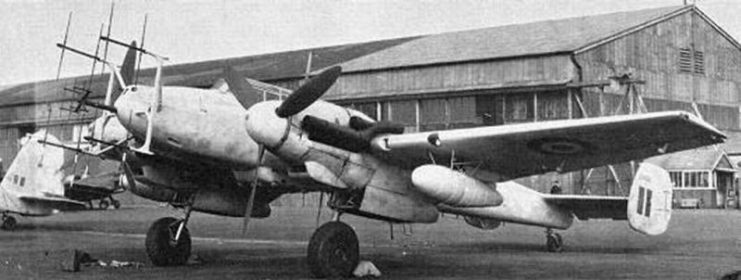
For example, Heinz-Wolfgang Schnaufer, one of the Luftwaffe’s leading night fighter aces, was flying a Bf 110 G-4 equipped with Schraege Musik canon and Liechtenstein radar when he attacked a stream of British Lancaster bombers on the night of 21st February 1945. In the space of less than twenty minutes, Schnaufer shot down no less than seven Lancaster bombers.

Read another story from us: 5 Messerschmitt Fighter Planes of WWII
As a day fighter, the Bf 110 was largely a disappointment. In the early part of the war, on the eastern front and against early unescorted American daylight bombing attacks on Germany, it scored some successes. The problem was that the Bf 110 was simply too vulnerable against more maneuverable single-engine fighters to survive in a combat environment.
However, as a night fighter, a role for which it had never been designed, the Bf 110 proved to be devastatingly effective.
More than 1,500 Bf 110s were manufactured during 1944 (out of a total production for all models of the Bf 110 of around 6,000), and most of these were night fighters which took on the growing RAF night bombing raids.
